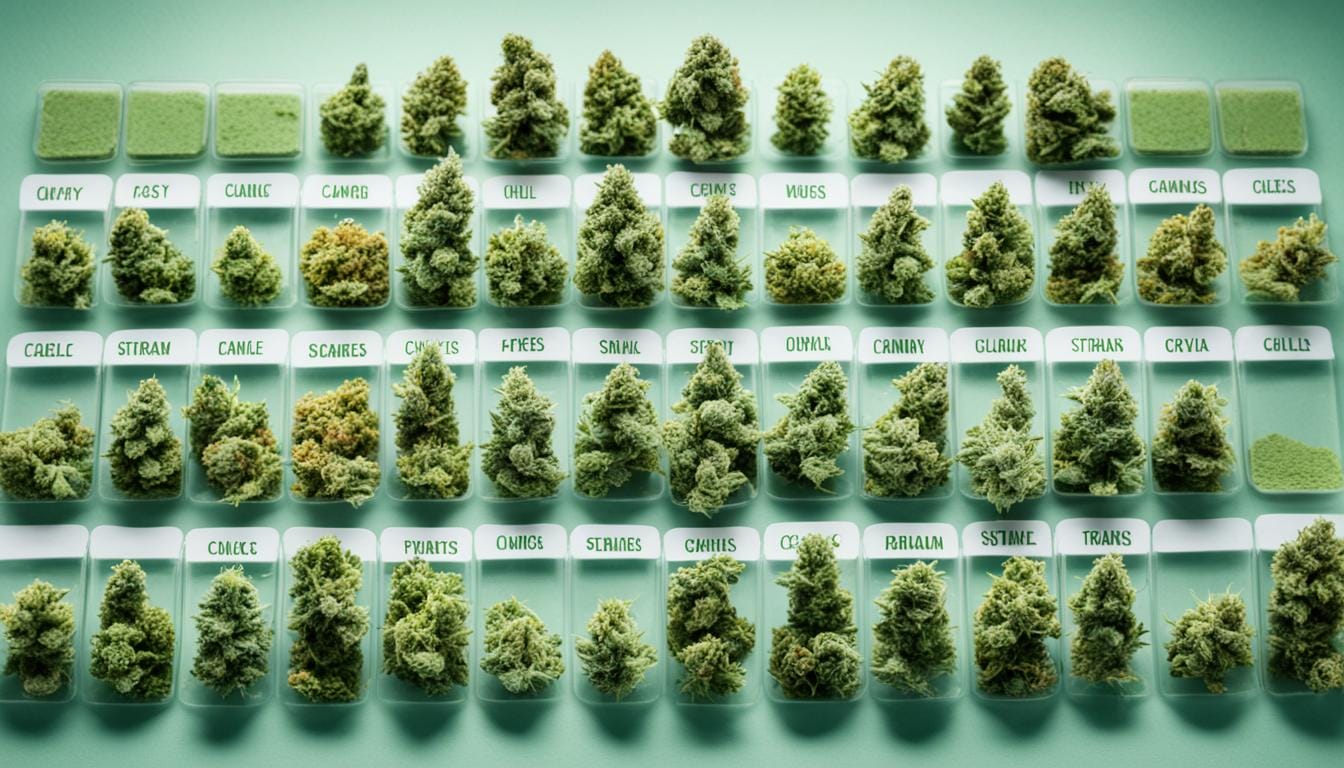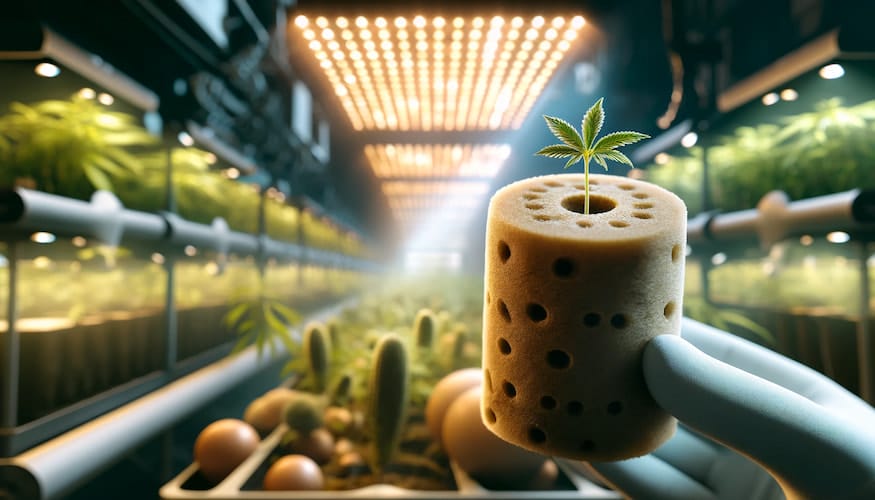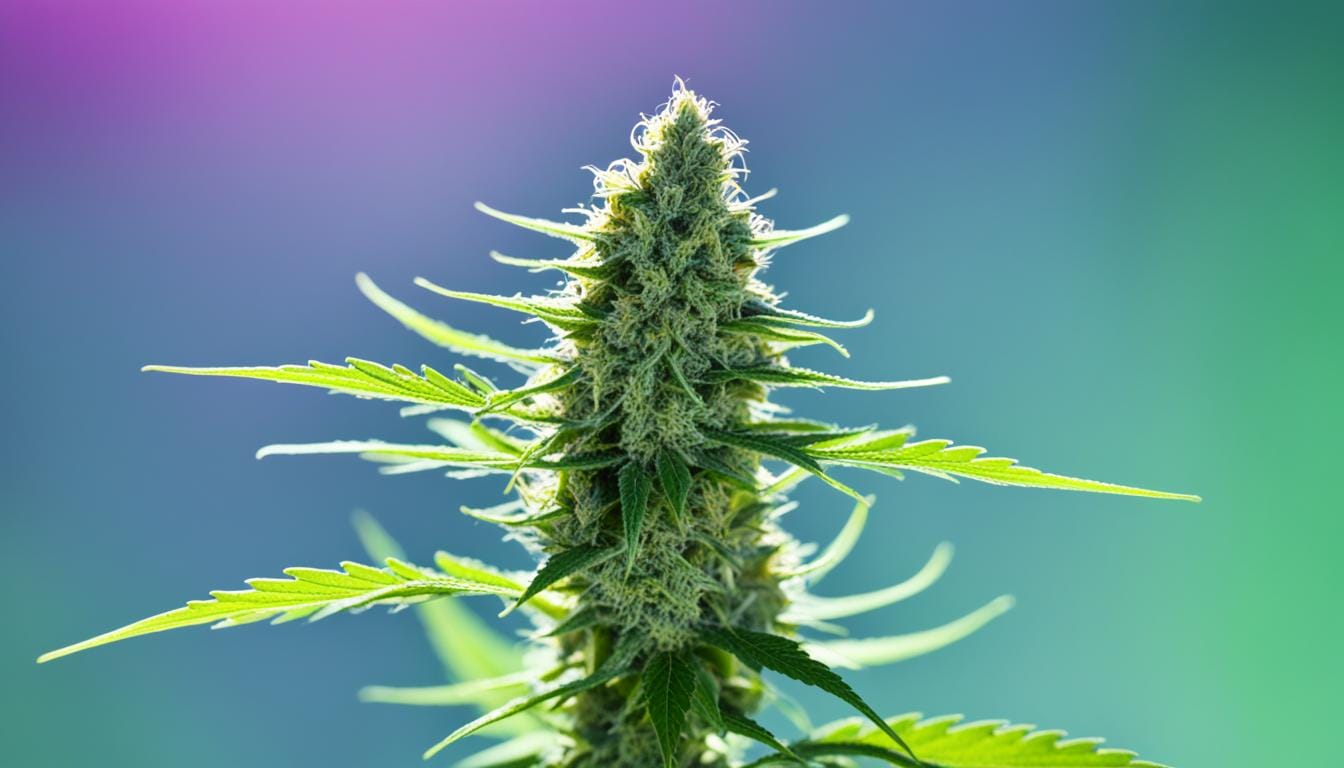Discover top mold-resistant feminized cannabis strains perfect for growers facing humidity challenges. Optimize yield with the best genetics for damp climates!
Master Advanced Techniques for Pruning and Training Cannabis Plants
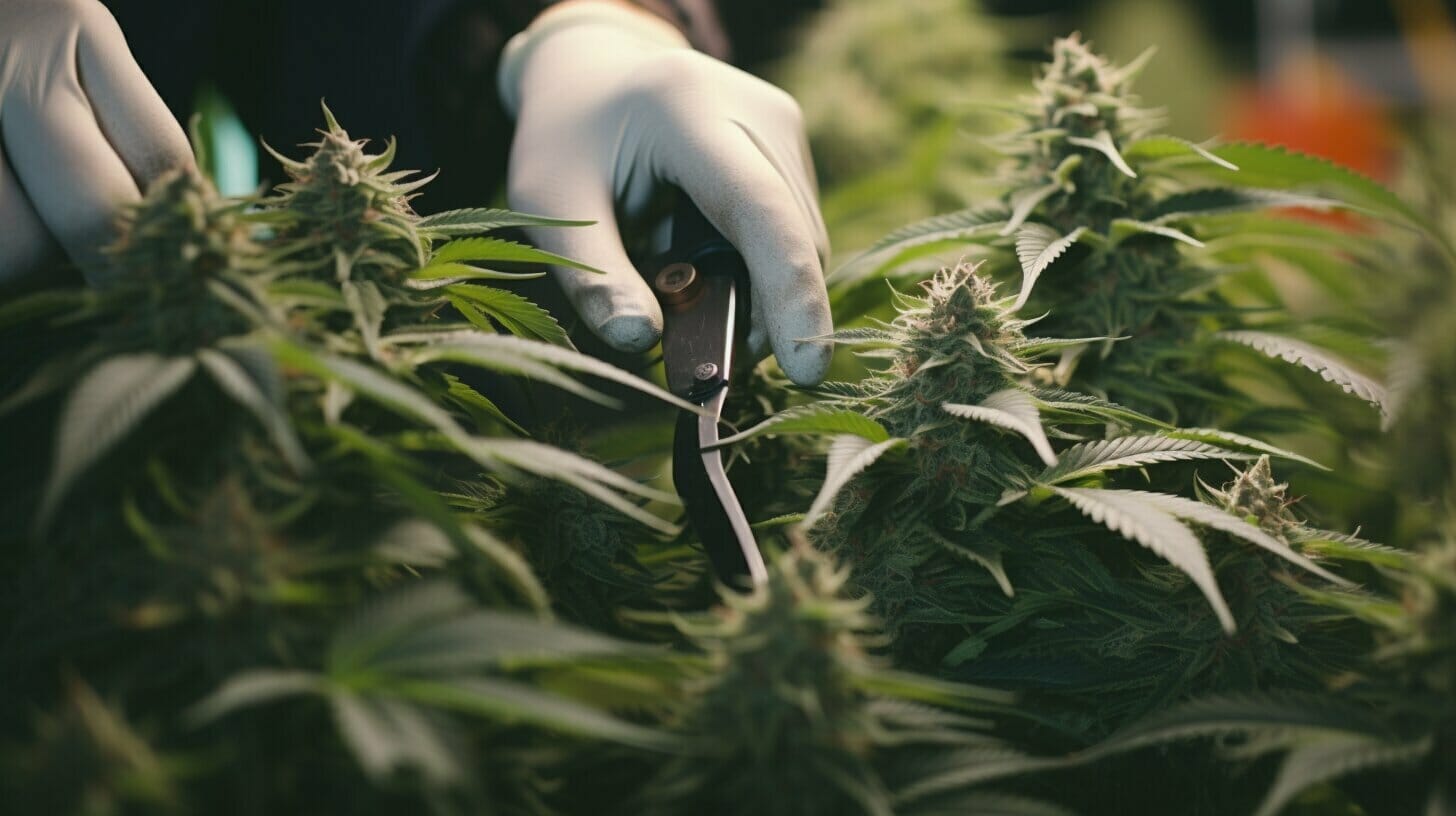
Welcome to our comprehensive guide on advanced techniques for pruning and training cannabis plants. As a cannabis cultivator, you understand that pruning and training are crucial components of plant care that can optimize growth and yield. However, by mastering advanced training techniques, you can take your gardening skills to the next level, and that’s exactly what we aim to help you achieve in this guide.
In the following guide, we will delve into the fundamentals of pruning and training, explore different techniques that can increase your yield, and provide tips on how to troubleshoot common challenges. We’ll also discuss the importance of timing, adapting techniques to different growth stages, and supplementing pruning and training with other optimization methods.
Whether you are a seasoned cannabis grower or just starting, our guide will equip you with the knowledge and skills to grow cannabis plants to their full potential. So, let’s get started!
Key Takeaways:
- Advanced techniques for pruning and training cannabis plants can optimize growth and yield
- Mastering these techniques takes your gardening skills to the next level
- This comprehensive guide will help you delve into the fundamentals of pruning and training, explore different techniques, and troubleshoot common challenges
- Timing, adapting techniques to different growth stages, and supplementing with other methods are essential for optimal plant growth
Understanding the Basics of Pruning Cannabis Plants
Pruning is an essential aspect of cannabis plant care that involves removing unwanted leaves, branches, and buds. This technique helps to improve the health and yield of the plant by redirecting its energy to essential parts. However, pruning should be done with caution as improper cuts can cause damage to the plant. Before mastering advanced pruning techniques, it is crucial to understand the basics.
Why Prune Cannabis Plants
Pruning cannabis plants can result in a more robust and healthier plant. By removing dead, yellow, or damaged leaves, the plant can redirect its energy to producing new growth and flowers. Pruning can also help to increase airflow and light penetration, leading to better nutrient absorption and photosynthesis.
When to Prune Cannabis Plants
Pruning should be done during the vegetative stage when the plant is actively growing and there is enough time for it to recover before the flowering stage. It is advisable to prune during early morning or late afternoon to avoid exposing the plant to direct sunlight during the hottest part of the day.
| Tools for Pruning Cannabis Plants | How to Use Them Effectively |
|---|---|
| Pruning Shears | Use to cut small branches, leaves, and buds. Ensure the blades are sharp to avoid tearing the plant tissue. |
| Hand Pruners | Use for cutting larger branches and stems. Ensure to make clean cuts, angling the blades at a 45-degree angle. |
| Scalpels | Use for precision cuts, such as removing single leaves. Be careful not to cut too deep, damaging the plant tissue and causing stress. |
How to Prune Cannabis Plants
Basic pruning involves removing the lower leaves and branches that are not receiving enough light. Cut at the base of the branch with pruning shears or hand pruners. Ensure not to remove too many leaves at once, as this can cause stress to the plant. It is recommended to remove no more than 20 percent to 30 percent of the plant at once.
Mastering basic pruning techniques is crucial before moving on to advanced pruning methods. By understanding the fundamentals of pruning, you can improve the overall health and yield of your cannabis plants.
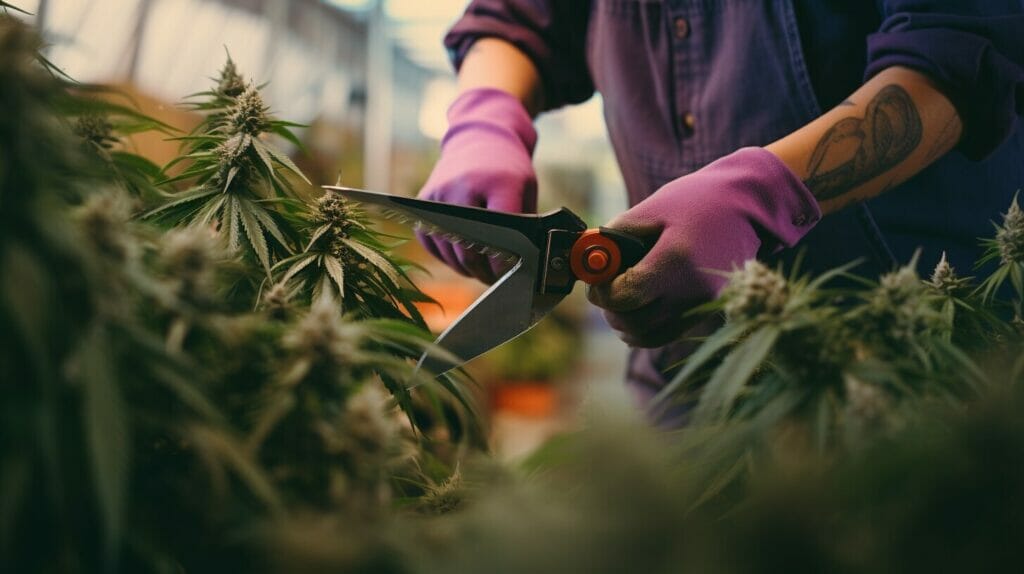
Training Techniques for Stronger Cannabis Plants
Training cannabis plants is a crucial step toward achieving optimal growth and yield. When done right, training can improve stem strength, increase foliage coverage, and enhance bud production. Here are some advanced training techniques that can help you grow healthier and stronger cannabis plants:
Topping
Topping involves cutting off the top of the main stem to promote the growth of lateral branches. This method helps to control the plant’s height and increase yield by creating more bud sites. To top a plant, use a clean pair of scissors or pruning shears to cut the stem just above the node where the new branches will grow.
Low-stress Training (LST)
LST involves gently bending and tying down the branches of a plant to encourage horizontal growth and create a more even canopy. This technique allows for better light penetration and air circulation, leading to larger yields and healthier plants. To perform LST, use soft plant ties or string to gently bend the branches and secure them to the side of the container or grow medium.
Super Cropping
Super cropping involves intentionally damaging the stem to create a knuckle-like swelling that strengthens the plant and promotes lateral growth. This technique can be used to control the plant’s height and increase yield by creating more bud sites. To supercrop a plant, use your fingers or pliers to gently crush the stem just below a node, being careful not to break it completely.
These advanced training techniques require careful attention to detail and timing. It’s important to start training your plants at the right time and to use the right technique for your specific strain. When performed correctly, training can help you achieve healthier and more robust cannabis plants.
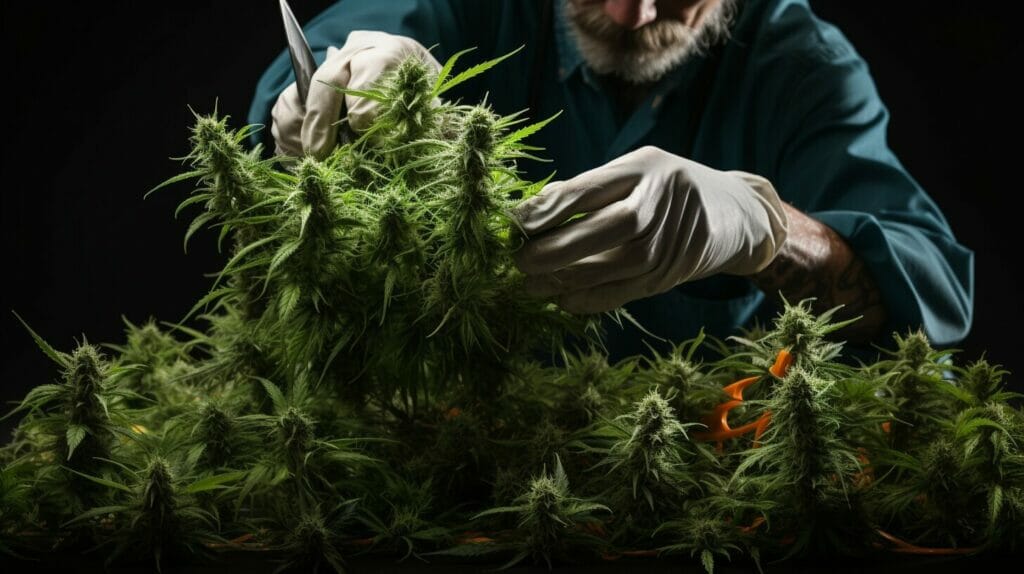
Advanced Pruning Techniques for Increased Yield
Pruning is a crucial aspect of cannabis plant care, and advanced pruning techniques can significantly increase your yield. By removing unnecessary plant material, you redirect the plant’s energy to more essential functions like bud development, allowing it to grow fuller and denser.
Defoliation is one of the most popular advanced pruning techniques. It involves removing a significant portion of the plant’s leaves during the flowering stage, exposing more light to the buds, and enhancing their growth. But, it should be done gradually and not all at once to avoid plant stress. You can defoliate a few leaves at a time, starting from the bottom, and then wait a few days before defoliating more.
Lollipopping is another technique that involves removing the lower branches and leaves of the plant, leaving only the upper portion. This helps to direct the plant’s energy to the top buds. Lollipopping can be done during the vegetative stage or early flowering stage to allow the plant to focus on growing better-quality buds on the upper canopy.
Selective pruning is a technique that involves the removal of specific leaves, branches, or buds that are either damaged or not growing well. By removing these, the nutrients and energy are redirected to healthier parts of the plant, resulting in increased yield.
Keep in mind that while advanced pruning techniques can enhance your yield, over-pruning can lead to plant stress and potentially damage your plant’s growth and yield. Therefore, it’s crucial to be cautious and not remove too much material at once. It’s best to start slowly and observe the plant’s response before proceeding with further pruning.
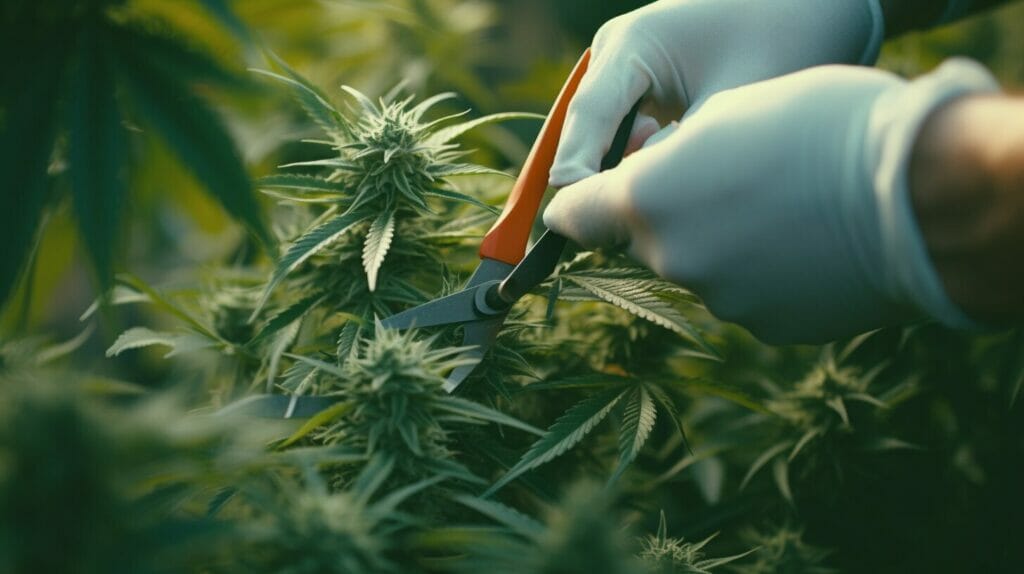
Remember that pruning should always be done with sanitized and sharp tools to avoid damaging the plant. After pruning, it’s essential to keep the plant healthy by providing proper care, such as watering, feeding, and pest control. With these techniques, your cannabis plants will thrive, and you can enjoy a bountiful harvest.
Implementing Pruning and Training Techniques in Different Growth Stages
Adapting pruning and training techniques to the different growth stages of cannabis plants is crucial for optimal plant growth and yield. The growth stages of cannabis plants can be broadly categorized into three phases: vegetative, flowering, and pre-harvest.
Vegetative Stage: During the vegetative stage, cannabis plants experience rapid growth and development. It is an ideal time to implement pruning and training techniques to shape the plant’s growth. To promote lateral branching and bushiness, topping and low-stress training (LST) methods are recommended. Topping is the process of cutting off the main stem’s apical bud, while LST involves tying and bending stems to encourage outward growth.
Flowering Stage: Once cannabis plants enter the flowering stage, they focus on producing buds, and growth slows down. At this stage, pruning and training must be minimized, as the plants are highly sensitive to stress. It is recommended to remove only the lower leaves and branches that are blocking light penetration to the bud sites. Doing so will redirect the plant’s energy towards the buds, leading to bigger, denser flowers.
Pre-Harvest: During the final stage, cannabis plants are ready for harvest, and pruning and training are limited to essential maintenance only. At this point, it is crucial to check the plants regularly for any signs of pests or diseases and take appropriate measures to prevent them from spreading.
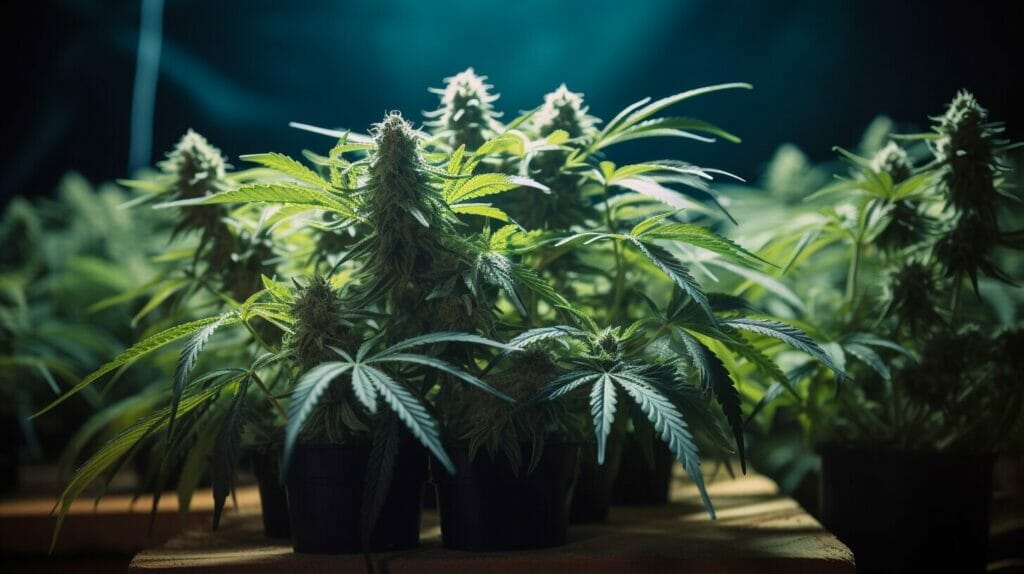
By understanding the different growth stages of cannabis plants, you can tailor pruning and training techniques to the plant’s unique needs at each phase. When done correctly, it can lead to healthier plants, higher yields, and better-quality buds.
Troubleshooting Common Pruning and Training Challenges
Advanced techniques for pruning and training cannabis plants require precision, skill, and practice. Even the most experienced growers can sometimes face common issues, from over-pruning to plant stress. Here are some tips to overcome these challenges and maintain healthy pruned and trained cannabis plants.
Over-pruning
Over-pruning a cannabis plant can result in stunted growth, reduced yield, and even plant death. To avoid over-pruning, start by removing only the dead or yellowing leaves, and limit the amount removed per day. Gradual pruning can help the plant adjust to the changes without causing stress, even with advanced techniques. Keep in mind that cannabis plants can quickly recover from minor pruning but may take longer to recover from severe pruning.
Under-training
Under-training can lead to an inefficient use of space and light, resulting in lower yields. To prevent under-training, make sure to train the plants regularly, following the recommended techniques for the specific growth stage. Low-stress training, such as bending and tying down branches, can help prevent under-training while minimizing stress on the plants.
Plant Stress
Pruning and training can cause stress to the plant, leading to slower growth and reduced yield. To minimize stress, make sure to use clean and sharp cutting tools, and avoid pruning or training during the flowering stage. Additionally, providing optimal growing conditions such as proper lighting, temperature, and humidity can help reduce stress and promote healthier plant growth.
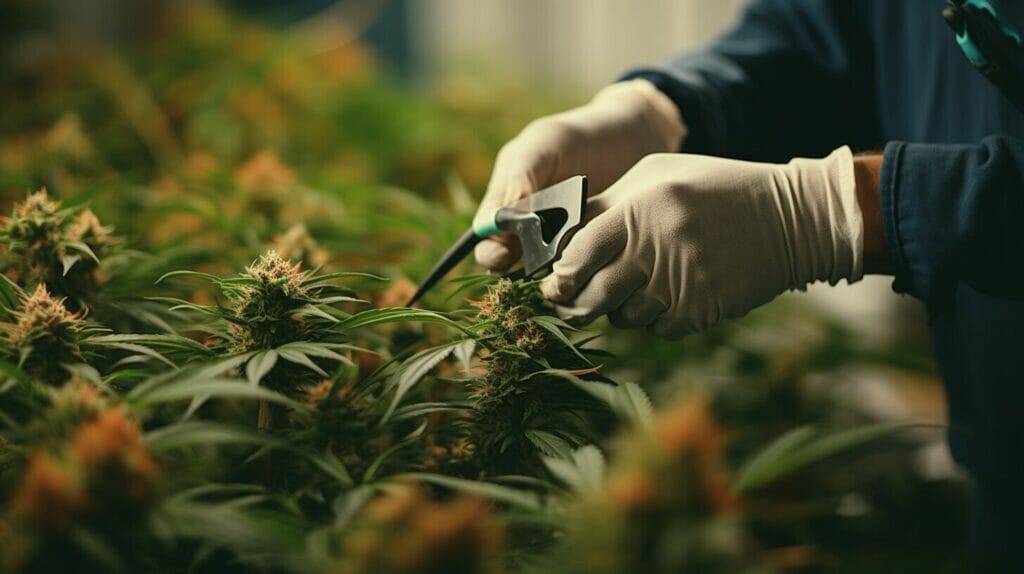
While pruning and training cannabis plants require skill and patience, the benefits of optimizing plant growth and yield are worth the effort. With these troubleshooting tips, you can overcome common challenges and maintain healthy, pruned, and trained cannabis plants.
Advanced Techniques for Training Specific Cannabis Strains
Maximizing the yield and potency of different cannabis strains requires specific training techniques to optimize their unique growth characteristics. Understanding the specific requirements of each strain is essential when selecting the right training techniques to apply.
For example, some strains such as Sativas grow tall and require techniques that assist in managing their height, while Indica strains grow bushy and require techniques focusing on their branching structure.
Low-stress training is an effective method for training Sativa strains, as this technique involves bending and securing branches using ties, cages, or trellises. This training technique encourages lateral branch growth, reduces plant height, and ensures an even canopy.
Indica strains, on the other hand, require topping to increase lateral branching, as well as super cropping to control height and promote efficient light distribution. Topping involves cutting off the top of the main stem to encourage lateral branching, while super cropping involves gently squeezing and manipulating the stem, causing it to bend and become sturdier.
Training autoflowering strains requires different techniques as these strains have limited vegetative growth periods, and any stress during this stage can lead to stunted growth or reduced yield. LST (low-stress training) combined with defoliation is a suitable method for training autoflowering strains, as it helps to maintain the light distribution while limiting stress.
It is important to pay attention to each strain’s growth characteristics and tailor training techniques to them accordingly. Applying the wrong techniques can lead to stunted growth, reduced yield, and overall weakening of the plant’s health.
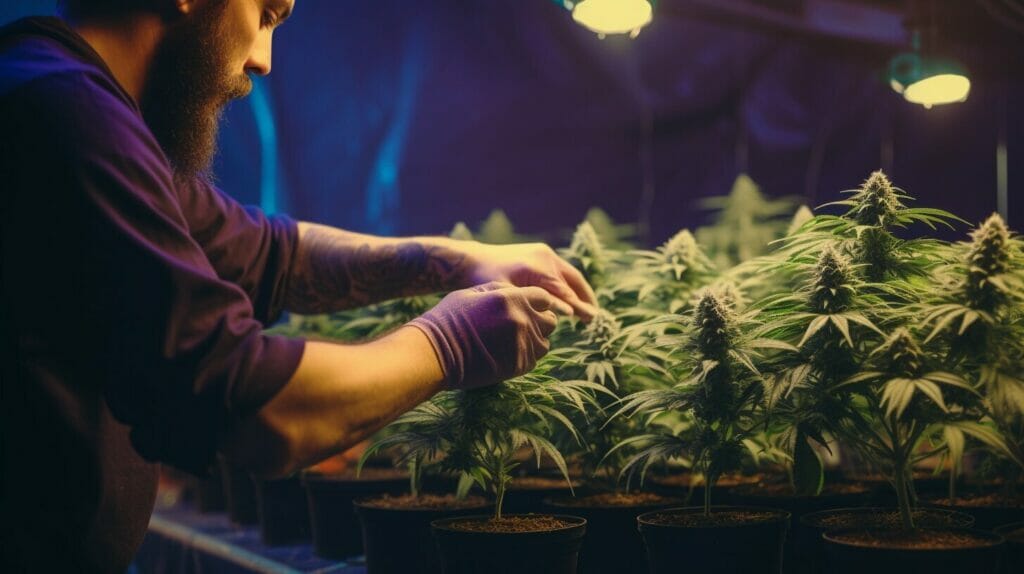
“Training is an art that requires keen observation, patience, and consistency. It is a process that helps in sculpting the cannabis plant to optimize its potential.”
Supplementing Pruning and Training with Other Growth Optimization Techniques
While advanced techniques for pruning and training cannabis plants are essential for optimal growth and yield, there are other methods that can be used to complement them. Here are some key techniques to consider:
| Technique | Description |
|---|---|
| Nutrient management | Proper nutrient management is critical for ensuring that cannabis plants receive the necessary minerals and nutrients for optimal growth. This can be achieved through regular fertilization, composting, and soil testing. |
| Light manipulation | The amount and quality of light that cannabis plants receive can have a significant impact on their growth and development. Techniques such as topping, super cropping, and low-stress training can be used to improve light penetration, while the use of grow lights can help supplement natural light sources. |
| Environmental control | Temperature, humidity, and air circulation can all affect cannabis plant growth. It is important to maintain optimal environmental conditions to prevent stress and promote healthy growth. This can be achieved through the use of fans, heaters, dehumidifiers, and air filters. |
By supplementing pruning and training with these additional techniques, you can take your cannabis cultivation to the next level and achieve exceptional yields and high-quality plants.
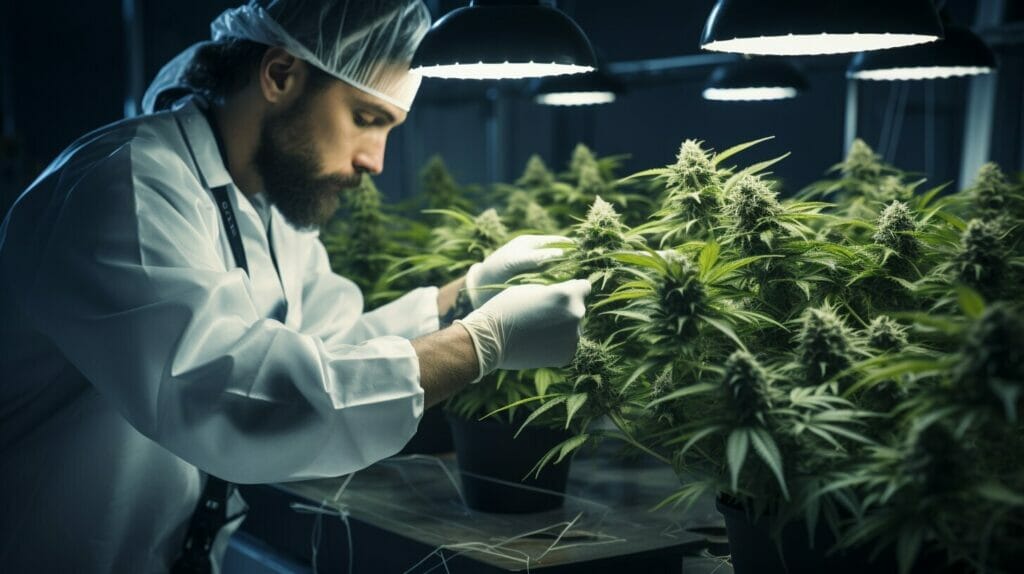
Maintaining Healthy Cannabis Plants
Proper care is crucial for maintaining healthy pruned and trained cannabis plants. Here are some tips for ensuring optimal growth and yield:
| Tip | Description |
|---|---|
| Watering | Provide consistent and appropriate watering to prevent underwatering or overwatering. Ensure the soil is moist but not waterlogged. |
| Feeding | Use high-quality nutrients and fertilizers to provide the necessary nutrients for optimal growth. Follow the instructions carefully and avoid overfeeding. |
| Pest Control | Conduct regular inspections for pests and diseases and take action promptly. Use organic or chemical treatments as appropriate. |
| Disease Prevention | Maintain a clean and sterile growing environment to minimize the risk of diseases. Use appropriate ventilation and sanitation practices. |
With proper care, pruned and trained cannabis plants can thrive and produce impressive yields. Remember to monitor their growth closely and adjust care practices as necessary.
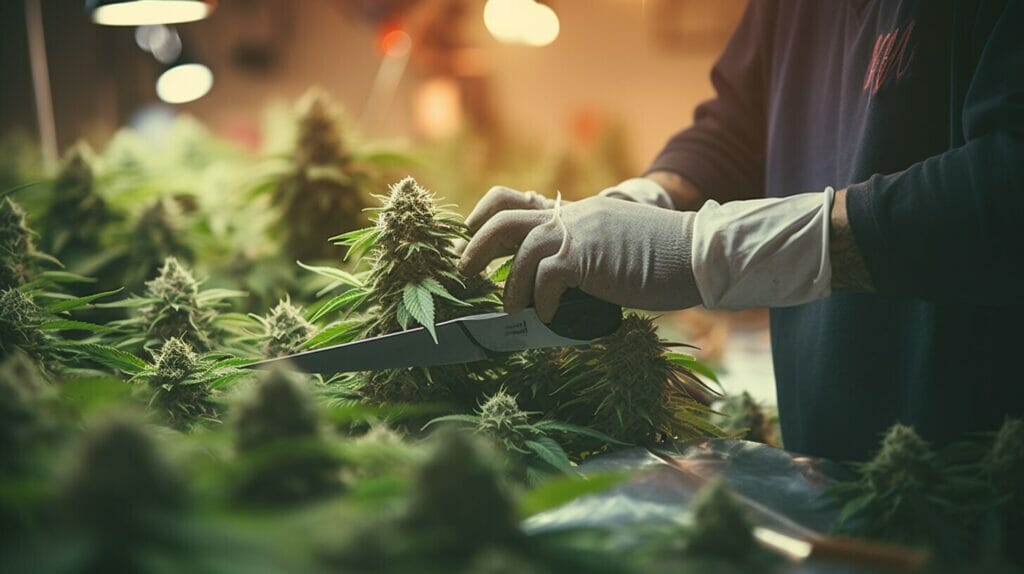
Elevate Your Gardening Skills by Pruning and Training Cannabis Plants
Well, there you have it: our complete guide to pruning and training cannabis plants. By following the tips and techniques outlined in this article, you can maximize the yield, health, and overall quality of your plants. Unlock your green thumb, and start cultivating the best cannabis plants possible!
Now that you know all the secrets of cannabis plant training, check out the collection of regular, feminized, and autoflower cannabis seeds at Seeds Here Now.
FAQ
Q: What are the benefits of pruning cannabis plants?
A: Pruning cannabis plants helps promote healthier growth and increased yield. It allows for better light penetration and airflow, and reduces the risk of pests and diseases.
Q: What are some common training techniques for cannabis plants?
A: Some common pruning techniques for cannabis plants include topping, defoliation, lollipopping, and selective pruning.
Q: How can training techniques strengthen cannabis plants?
A: Training techniques such as low-stress training and super cropping help strengthen cannabis plants by encouraging the growth of lateral branches and improving overall plant structure.
Q: When is the best time to prune cannabis plants?
A: The best time to prune cannabis plants is during the vegetative stage, when they are actively growing and can recover quickly.
Q: How can I troubleshoot common pruning and training challenges?
A: Common pruning and training challenges such as over-pruning and under-training can be solved by being cautious and patient, adjusting techniques as needed, and providing proper care and support to the plants.
Q: Are there specific training techniques for different cannabis strains?
A: Yes, different cannabis strains may require specific training techniques based on their unique growth characteristics. Factors such as plant height and branching structure should be considered when choosing a training method.
Q: Can pruning and training be combined with other growth-optimization techniques?
A: Absolutely! Pruning and training can be complemented with other techniques such as nutrient management, light manipulation, and environmental control to achieve optimal growth and yield.
Q: How can I ensure the health of pruned and trained cannabis plants?
A: Maintaining the health of pruned and trained cannabis plants involves proper watering, feeding, pest control, and disease prevention. Regular monitoring and care are essential for optimal growth and yield.
Back

